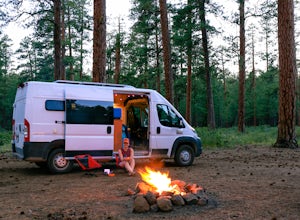**Indigenous Mountaineers Climb Mount Rainier: A Journey of Healing and Reclamation**[Image of Indigenous mountaineers on Mount Rainier].
**Introduction:**.
Mount Rainier, an iconic peak in the Cascade Mountains of Washington, has long held a special significance for Indigenous communities in the Pacific Northwest. As part of a healing and reclamation journey, a group of Indigenous mountaineers embarked on a mission to climb the mountain and reclaim their ancestral connection to the land..
**Reconnecting with Ancestral Lands:**.
For centuries, Indigenous peoples have inhabited the lands surrounding Mount Rainier. The mountain holds cultural, spiritual, and historical importance for many tribes, including the Nisqually, Puyallup, Cowlitz, and Yakama. However, the legacy of colonization and displacement had severed many Indigenous communities from their ancestral lands..
This climb was an opportunity for Indigenous mountaineers to reconnect with their ancestral heritage and reclaim their connection to the mountain. By summiting Rainier, they aimed to honor their ancestors and inspire future generations to embrace their Indigenous identity..
**The Climb:**.
The Indigenous mountaineers, representing various tribes and organizations, gathered at the base of Mount Rainier in July 2022. The group included experienced climbers and novices alike, united by their shared purpose..
The climb was physically and emotionally challenging. The team faced rugged terrain, unpredictable weather, and the altitude’s effects. However, they persevered, drawing strength from their ancestral connection and the support of the group..
**Healing and Empowerment:**.
Beyond the physical challenge, the climb served as a healing journey for the Indigenous mountaineers. It provided a space for them to process intergenerational trauma, connect with their cultural traditions, and find strength in their Indigenous identity..
The experience empowered the climbers to become role models for their communities, demonstrating the resilience and determination of Indigenous peoples. It also inspired them to continue their work of advocating for Indigenous rights and environmental conservation..
**Reclaiming Indigenous Knowledge:**.
The climb was not just about summiting a mountain. It was also about reclaiming Indigenous knowledge and perspectives on mountaineering. The Indigenous mountaineers shared their traditional practices, such as using natural navigation aids and respecting the mountain’s environment..
By incorporating Indigenous knowledge into their climb, they challenged the dominant narrative of mountaineering as a purely Western endeavor. They demonstrated that Indigenous perspectives and practices have a vital role in understanding and interacting with the mountain environment..
**Environmental Advocacy:**.
Mount Rainier is an iconic natural landmark that faces threats from climate change and human activities. The Indigenous mountaineers used their platform to raise awareness about environmental issues and advocate for the protection of the mountain and its surrounding ecosystems..
As stewards of the land, Indigenous communities have a deep connection to the environment and a responsibility to protect it for future generations. The climb provided an opportunity to highlight the importance of Indigenous voices in conservation efforts..
**Conclusion:**.
The Indigenous mountaineers’ climb of Mount Rainier was more than just an ascent to the summit. It was a journey of healing, reclamation, empowerment, and advocacy. By reconnecting with their ancestral lands, reclaiming Indigenous knowledge, and inspiring future generations, they paved the way for a more inclusive and sustainable future for all..
The climb served as a reminder that Indigenous peoples have an unbreakable connection to the land and a vital role to play in shaping its future. As the Indigenous mountaineers continue their journey of healing and reclamation, they carry the spirit of their ancestors and the hope for a future where Indigenous perspectives are valued and respected..

